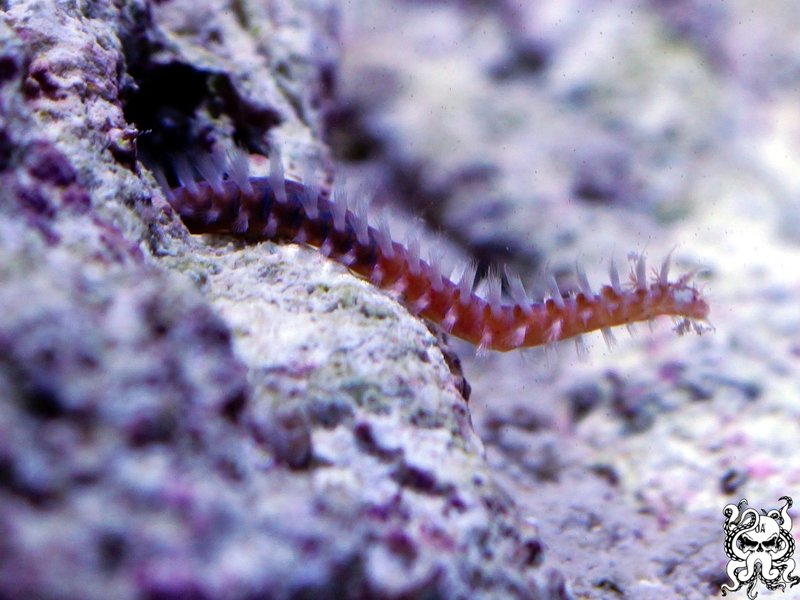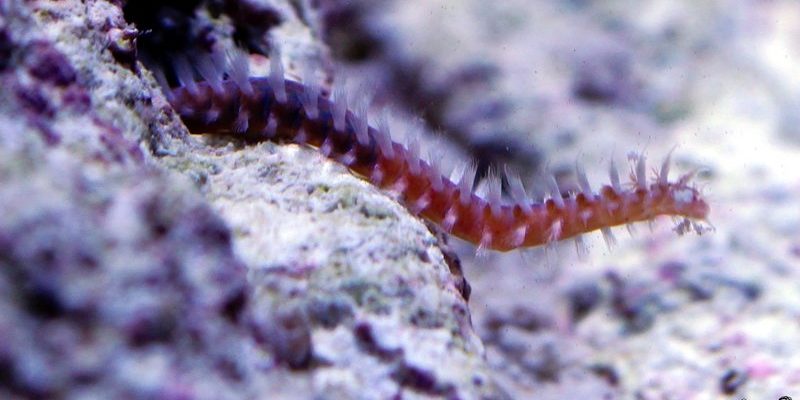
You might be wondering, what are bristle worms, anyway? They’re kind of like the cleanup crew of the ocean floor—helping to break down decaying matter and keeping the ecosystem healthy. But when their population booms, they can become a nuisance, consuming not just waste, but also your prized corals and invertebrates. Thankfully, with a little knowledge and preparation, you can keep these worms in check without breaking a sweat.
What Are Bristle Worms and Why Should You Care?
Bristle worms are segmented worms that usually live in your aquarium substrate or rockwork. Most of them are harmless and help to keep your tank clean by eating leftover food and dead plant material. However, they can reproduce quickly under the right conditions, which can lead to a full-blown outbreak.
You might encounter a few types of bristle worms, but the most common ones are the **Eunicea** and **Nereis** species. These worms have bristles (or chaetae) that can irritate skin if you accidentally touch them. They can be quite beneficial in small numbers, but you definitely don’t want them taking over. Imagine having a couple of helpful friends at your party, but then they invite all their buddies and the whole place is overcrowded—it just doesn’t work!
Understanding the Causes of Bristle Worm Outbreaks
A bristle worm outbreak usually happens when there’s an excess of nutrients in your tank. This often results from overfeeding, poor water quality, or an excess of decaying matter. Here’s a breakdown of the main culprits:
– **Overfeeding**: When you drop a little too much food into your tank, any uneaten bits can quickly become a buffet for bristle worms.
– **Poor water quality**: High levels of nitrate or phosphates can promote the growth of these worms.
– **Decaying matter**: If you’ve got dead fish, plants, or any leftover food in your tank, bristle worms will take that as an invitation to settle in.
To keep your tank healthy, consider this like maintaining a tidy kitchen—if you leave crumbs everywhere, it won’t be long before you’ve got ants.
Setting Up Your Tank to Prevent Outbreaks
When you’re setting up your aquarium, prevention is your best friend. Here are some steps to consider:
1. **Choose a good substrate**: Opt for sandy substrates instead of coarse ones, as bristle worms tend to thrive in the latter.
2. **Add the right filtration**: A quality filter can help you maintain water quality and reduce excess nutrients.
3. **Monitor your feeding habits**: Create a feeding schedule that helps prevent overfeeding. Try to stick to only what your fish can consume in a few minutes.
You could think of this as laying down good foundation for a house. If the foundation is unstable, everything built on top of it is at risk.
Identifying a Bristle Worm Infestation
Spotting a bristle worm infestation early can save you a ton of hassle later on. Here are some signs to watch for:
– **Increased bristle worm sightings**: If you see more than a couple of these worms, it’s time to take action.
– **Damage to corals**: If your corals start showing signs of stress or damage, bristle worms might be the culprit.
– **Overabundance of waste**: An increase in leftover food, or detritus on the tank floor, can indicate a problem.
Think of your aquarium as a garden. If you see too many weeds popping up, it’s a signal to do some maintenance before it gets out of hand.
Managing an Outbreak: Effective Control Methods
If you already have a bristle worm outbreak, don’t panic. There are steps you can take to manage the situation effectively:
– **Manual removal**: Use tweezers or a net to catch the worms. Just be careful; their bristles can irritate your skin!
– **Trap them**: You can create simple traps using a piece of shrimp or fish in a container. Set it up at night; bristle worms are nocturnal and often come out to feed.
– **Reduce feeding**: Scale back on feeding your fish temporarily. This will help starve the worms and limit their food supply.
Sometimes, dealing with a problem is all about being strategic rather than reacting out of fear.
Long-Term Strategies for Keeping Bristle Worms in Check
Once you’ve managed the outbreak, consider implementing some long-term strategies to prevent another one:
– **Regular maintenance**: Clean your tank regularly, ensuring no food or waste is left behind.
– **Keep an eye on water parameters**: Regularly test for nitrates and phosphates to maintain a balanced environment.
– **Introduce natural predators**: Certain fish, like wrasses, enjoy snacking on bristle worms. Just ensure that they’re compatible with your existing inhabitants.
Taking these steps is like having a regular checkup for your aquarium. It helps catch any potential issues before they grow into bigger problems.
In the grand scheme of aquarium keeping, managing bristle worm outbreaks is just one of many challenges you’ll face. With the right setup and ongoing maintenance, you can keep those little worms from crashing your underwater party. Remember, balance is key in any ecosystem. Just like you wouldn’t overcrowd your dinner table, you’ll want to keep your tank’s environment balanced and clean.
So, whether you’re just starting with your tank setup or dealing with an unwelcome infestation, you’ve got the tools to keep your aquarium thriving. Remember, every aquarium has its unique rhythm, and with a little patience and care, you’ll find yours. Happy fishkeeping!

